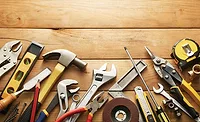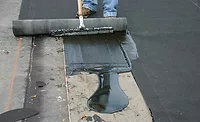Using the Right Tools Can Keep Your Roofing Crews Sustainable



In several past columns I have discussed how sustainability is as much about people as the environment. And some of the most important people affected by sustainable roofing are the workers on your crews. For a roofing project to be truly sustainable, the health, safety and success of the workers who install the roof must be considered.
Given this month’s focus in Roofing Contractor on tools and equipment, I’d like to use this column to highlight the ways the tools you select can contribute to the sustainability of your workforce. First, the right tools can help prevent injuries on the job. Some tools can reduce the amount of individual effort required to complete a task and reduce the risk of strain to muscles, tendons, and joints. Some tools allow individual workers to handle heavy roofing materials that otherwise might lead to back injuries. Examples of tools that can carry the load for your workers include:
- Ladder hoists to transport roofing rolls, shingles, and ballast
- Roll carriers to maneuver and place roofing rolls
- Carts for applying loads of ballast and cans of adhesive
Other tools can reduce the number of individual movements required to complete a task, leading to a reduction in repetitive motion injuries. Probably the most important tools to reduce repetitive motions involve strategies to keep workers standing up rather than bending down to perform tasks. Such stand-up tools not only reduce the risk of back strain but also other repetitive-motion stresses to wrists, elbows, and knees. Examples of stand-up tools that reduce repetitive strains on your workers include:
- Attachment tools to position and fasten insulation and seam plates
- Base sheet fastening tools
- Primer and adhesive applicators
- Membrane slitters and seam rollers
- Automatic welding tools
In addition to reducing the threat of job-related injuries, good tools also increase the productivity of your workforce. With the right tools, your workers can handle heavier loads, cover more roof area, and reduce costly application errors. As a result, roofing details are installed more consistently and costly call-backs are reduced.
Finally, one of the most important features of modern roofing tools is that they are user-friendly. And when your workers’ tools are their friends, they tend to enjoy their work. That can be an important benefit when recruiting new workers. If potential recruits see your job sites as places that protect them and help them succeed, they’re more likely to pick your company over your competitor as the place they want to work.
So I hope you’ll take some time to review all of the new tools featured in this issue (see page 42). I’m sure there’s one you haven’t tried yet, and it could make the difference in the sustainable success of your workers and your company.
Looking for a reprint of this article?
From high-res PDFs to custom plaques, order your copy today!







